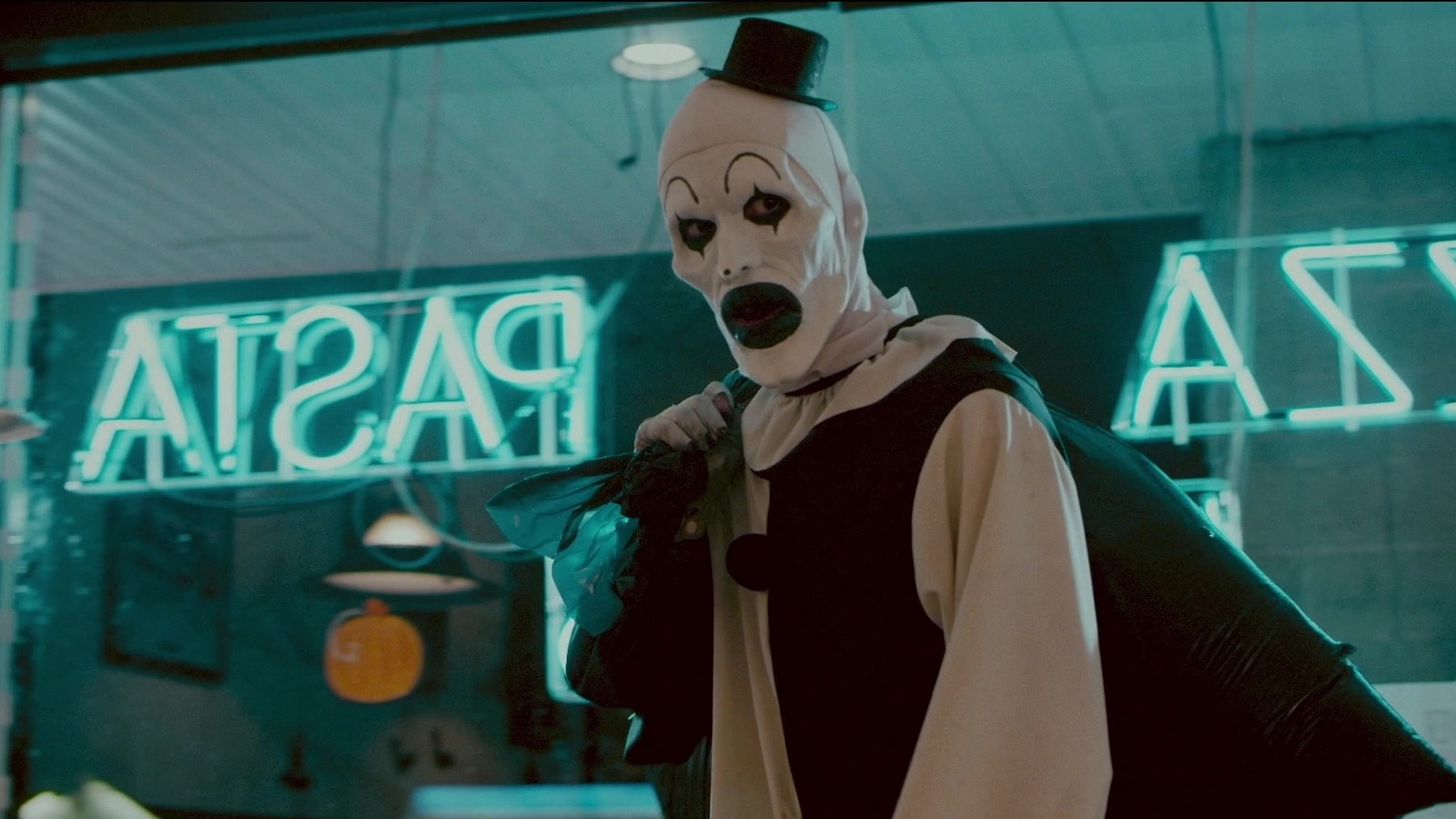
Terrifier Series: 11 Things That Don’t Add Up
If you’re not familiar with the “Terrifier” movies, you may only be aware of their iconic villain, Art the Clown, commonly portrayed by David Howard Thornton. Art embodies a classic horror trope, preying on our irrational fear of clowns—a theme prevalent in numerous horror films like Stephen King’s “It” and “Killer Klowns From Outer Space.” Yet, Art represents more than just a sadistic figure draped in greasepaint; his narrative is intricate and often diverges from the traditional slasher formula. Writer-director Damien Leone draws heavily on the dreamlike storytelling style reminiscent of David Lynch, creating a universe where logic often takes a backseat.
When dissecting the inconsistencies in the “Terrifier” series, it’s essential to remember that the logic within these films doesn’t always adhere to reality. Leone has crafted a world where conventional rules do not apply. As such, many questions persist regarding the nature of Art and the events surrounding him. Here are some head-scratchers along with the most plausible explanations based on the surreal universe established by the filmmakers.
- What exactly are Art’s powers, and how did he acquire them?
- The nature of Art’s abilities varies throughout the series. In Leone’s earlier short, “The 9th Circle,” Art appears entirely human, with only a brief instance of glowing eyes that seems more like a hallucination. The short “Terrifier” hints at slasher conventions, where Art can catch up to victims despite apparent speed disparities, a phenomenon Leone later refers to as teleportation. The “All Hallow’s Eve” project integrated Art’s character into narratives that suggest supernatural elements, such as entering homes through videotapes, though the narratives lack in-depth explanations. The first feature presents Art mainly as a strong, cunning psychopath, until he showcases undeniable supernatural traits at the story’s climax. With “Terrifier 2,” he evolves into a darker, more formidable antagonist.
2. Who is the mysterious Little Pale Girl?
Art seems surprised to find himself resurrected, encountering the Little Pale Girl, portrayed by Amelie McLain. This eerie figure resembles a ghostly version of Art himself, captivating his attention with bizarre, disturbing actions. Leone describes her as a manifestation of the malevolent force behind Art’s resurrection, residing in an alternate dimension where reality bends. She’s a guiding presence, orchestrating Art’s attacks against Sienna and Jonathan, whose connection to her involves a deeper mystery linked to a gruesome backstory. By the end, the evil force appears to transition from the Little Pale Girl to Victoria, a survivor, raising questions about the choices made by this dark power.
3. Why does the sequel embrace supernatural elements?
While the original “Terrifier” clings to the traditional slasher framework, “Terrifier 2” shifts drastically into a supernatural territory. The resurrection of Art aligns him with cosmic forces of evil and pits him against Sienna, the chosen champion of good. Leone, however, holds back the full scope of this mythology, refraining from direct references to traditional religious constructs while hinting at a stranger, deeper conflict. This transition might be rooted in themes from Leone’s previous work, suggesting a blend of narrative threads that elevate the stakes for characters involved.
4. Are the events from “All Hallow’s Eve” part of the official storyline?
The events of “All Hallow’s Eve” generally don’t mesh with the main “Terrifier” films, given the change in cast and the feeling of early drafts rather than polished concepts. That said, producer Jesse Baget hints at a shared universe that allows for artistic reinterpretation. While “All Hallow’s Eve” covers ground that feels extraneous, it provides context and foundational elements that could enrich the narrative landscape in future installments.
5. What drives Art’s murderous behavior?
Each film offers a different rationale behind Art’s choice of victims. In “All Hallow’s Eve,” his killings feel arbitrary, while in the first “Terrifier,” he targets those who provoke or disrespect him. His methods often span the excessively brutal, adding layers of revenge to his actions. With the introduction of the Little Pale Girl in “Terrifier 2,” Art’s motives appear to intertwine with a bigger scheme directed towards emotionally dismantling Sienna by eliminating her loved ones.
6. What’s the significance of Art’s relationship with the Cat Lady?
A notable scene featuring the Cat Lady presents a flicker of depth to Art’s character. He allows her to cradle him, leading to insinuations of underlying mommy issues. However, this moment takes a dark turn when Art inflicts violence upon her. Drawing parallels to real-life serial killers, Leone hints at deeper psychological undercurrents that will likely remain unexplored for now.
7. Why complicate the timeline in the original film?
The narrative structure of “Terrifier” veers into a nonlinear approach that adds layers of confusion to a straightforward story. This may be a choice to enhance pacing or to play with audience expectations surrounding survival tropes. These twists create uncertainty regarding who will emerge as the final girl, ultimately revealing shocking transitions that might be effective without revealing critical character developments too soon.
8. What’s the deal with Art’s gross bathroom escapades?
Beyond typical horror movie gore, Art’s encounter in the bathroom raises eyebrows due to its excessive imagery. Yet Leone capitalizes on mundane moments that separate his character from traditional slashers. Art’s cleanliness post-misadventure leads to speculation about the supernatural attributes of his costume, which may play a hidden role in the narrative.
9. How does Sienna’s father possess prophetic insight?
Insights about Sienna’s deceased father reveal troubling aspects of his character alongside a prophetic foresight concerning his daughter’s future conflicts. Leone clarifies this character as a vessel for good, caught in a battle against evil. His demise served as a necessary precaution, but the backstory introduces complexities that may be worth unpacking more delicately in future films.
10. What is the purpose of Sienna’s dream and its ties to reality?
In a dream sequence reflective of iconic horror influences, Sienna faces Art in a surreal scenario that tests her resolve. This encounter turns out to be a trial orchestrated by benevolent forces, leading to the discovery and empowerment tied to her father’s sword, with real-world implications confirming its significance.
11. Why must Art undergo rebirth despite his healing abilities?
Art’s regenerative capabilities spark further questions, especially when he appears to defy mortal limits. The transformation into an indestructible force comes with stipulations, one of which ties directly into Sienna’s rise as the avatar of good. Existing rules surrounding his defeat are critical, yet the reemergence of Art hints at unsettling possibilities for future narratives, leaving audiences eager for further exploration.
As anticipation builds for “Terrifier 3,” fans are left pondering how these enigmas will unfold in upcoming chapters of this chilling saga.




